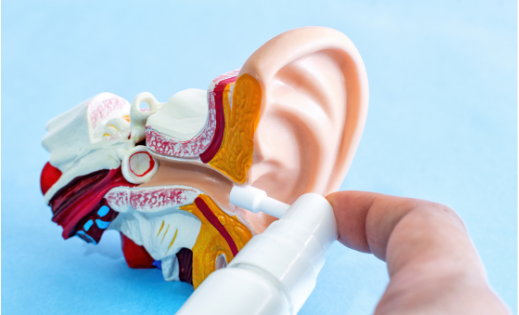Earwax (or “cerumen”) plays a surprisingly important role in keeping our ears — and our bodies — functioning at their best.
Learning its role and how to manage it well is essential to maintaining optimal ear health.
Let’s dive into why earwax is important, how to maintain it at home, and when you should see a professional to manage it.
What Is Earwax, Anyway?
Earwax is a natural mix of secretions from your ear canals, dead skin cells, and microscopic debris. It might sound gross, but this sticky substance is basically a bodyguard for your ears. It:
Traps dust, dirt, and bacteria before they go deeper
Keeps your ear canal lubricated (dry ears = itchy ears = misery)
Helps prevent infections
Repels insects (nope, I’m not kidding — bugs hate earwax)
In short: earwax is not the enemy. It’s your ear’s built-in security system.
When Good Wax Goes Rogue: Cerumen Impaction
Earwax is meant to slowly migrate out of your ear naturally. But sometimes… it overstays its welcome.
This can lead to cerumen impaction — a fancy way of saying “you’ve got a wax traffic jam.”
Symptoms of earwax buildup:
Muffled hearing (like you’re underwater but without the fun pool floaty)
Ringing in the ears (aka tinnitus)
Dizziness or balance issues
Itching, fullness, or straight-up pain
What causes buildup?
Overuse of earbuds or hearing aids
Poking things in your ears (please stop)
Naturally narrow ear canals
Aging (yup, ears get grumpy with time too)
Why Managing Earwax Is Actually a Big Deal
Left unchecked, earwax buildup can cause:
Temporary hearing loss (and the panic spiral that follows)
Ear infections
Tinnitus
Vertigo and balance problems
Tissue damage that can lead to tumors
Managing your earwax can support better hearing, comfort, and ear health in general — all while saving you from preventable visits to urgent care.
Do’s and Don’ts of Earwax Management
Do:
Use over-the-counter ear drops (mineral oil or hydrogen peroxide-based)
Try gentle warm water irrigation (like a baby shower for your ears)
See a professional if you’re unsure or if symptoms persist
Don’t:
Stick anything smaller than your elbow in your ear. Yes, that includes Q-tips.
Use ear candling — the science says no, and your eardrum says “please, just… no.”
Ignore persistent symptoms
Let’s just say: ears are self-cleaning ovens. They don’t need scrubbing — just gentle guidance.
When to See A Pro
Not all waxy situations can be handled at home. It’s time to call in reinforcements if you:
Have persistent hearing issues
Experience pain, dizziness, or discharge
Wear hearing aids or use in-ear devices regularly
ENTs, hearing care specialists, and audiologists can safely remove excess earwax with tools like irrigation, suction, or curettes. Sounds scary, but it’s usually quick, painless, and can provide instant relief.
Tips to Follow for Healthy Ears
Here are a few natural ways to support ear wellness at home:
Hydration: Drink plenty of water to keep earwax from drying out.
Healthy fats: Omega-3s can support healthy skin and gland function — including those tiny cerumen-producing glands.
Ear mindfulness: Take breaks from earbuds to give your ears space to breathe.
Gentle hygiene: Wipe your outer ears with a warm, damp cloth — no spelunking necessary.
Final Thoughts: Wax On, Wax Smart
Earwax might be one of the most misunderstood body fluids. Managing it properly supports hearing, balance, and overall ear health — no invasive poking or flaming cones required.
Next time you’re tempted to reach for a Q-tip, pause, breathe, and say: “Not today, ear gremlins. Not today.”
Get Earwax Relief at Hear Florida
The licensed specialists at Hear Florida will conduct full exams of your ears. They might find that your hearing loss is due to an overgrowth of earwax and clean your ears for you.
Schedule your free visual ear examination today here or call 1-844-4-HEARFL. We look forward to hearing from you!

